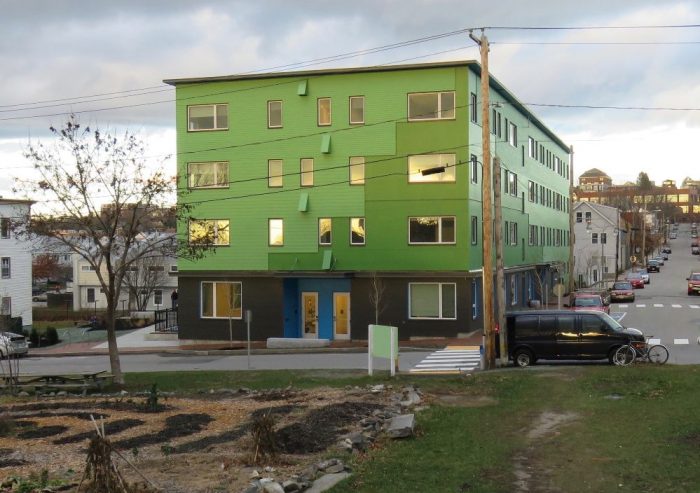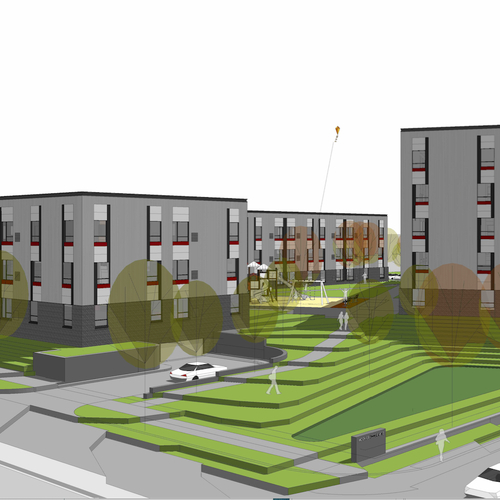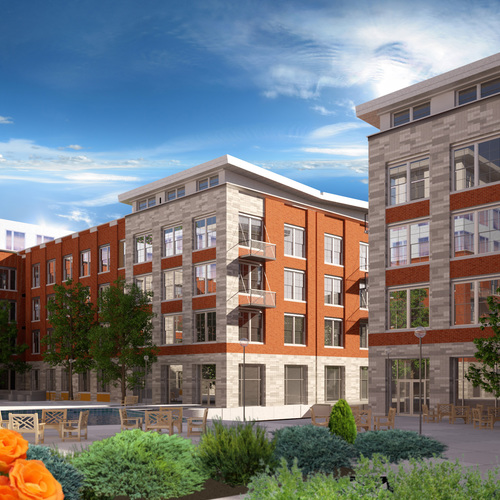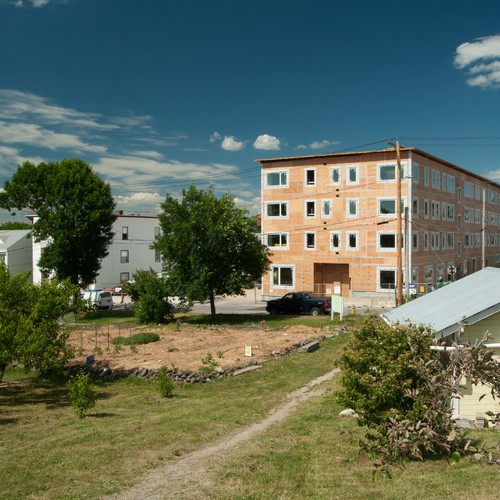
Jesse Thompson is a Maine architect whose company (Kaplan Thompson Architects) has been involved in three recent high-performance multifamily projects. At the Better Buildings by Design conference in Burlington, Vermont, on February 6, Thompson shared what he’s learned with an attentive audience of designers and builders.
Thompson has encountered plenty of owners who shy away from the Passive House approach out of fears that meeting the stringent standard will lead to high construction costs. When that happens, Thompson sometimes manages to slip high-performance targets into the project specs without explicitly notifying the owners. The happy result is that the project ends up performing almost as well as a Passive House project. Thompson calls this approach “stealth Passive House.”
For me, the important takeaway from Thompson’s presentation was this: With multifamily projects, airtightness and ventilation system efficiency matter more than insulation R-values.
A range of efficiency goals
The first multifamily project that Thompas discussed, Bayside Anchor, was a Passive House project certified by PHIUS. The second, Blackstone Apartments, was a high-performance project that wasn’t explicitly aiming for Passive House, but got most of the way to Passive House performance.
The third, Parris Terraces, is a project spearheaded by a for-profit developer who was unwilling to make a full commitment to the air sealing details required to achieve high performance.
Bayside Anchor project
Located in Portland, Maine, Bayside Anchor is an affordable housing project funded by the low-income housing tax credit program. The four-story 40,000 square foot building has 45 apartments. The budget came in at $170,000 per unit, including land costs and site developments costs. That’s $142 per square foot.

Bayside Anchor
The architects promised the owners that the new building would meet the Passive House standard. According to Thompson, achieving that goal required many “long, intense team meetings that each lasted…
Weekly Newsletter
Get building science and energy efficiency advice, plus special offers, in your inbox.

This article is only available to GBA Prime Members
Sign up for a free trial and get instant access to this article as well as GBA’s complete library of premium articles and construction details.
Start Free TrialAlready a member? Log in














15 Comments
Parris Terraces has 23 units, not 7, all one bedroom, all between 400 and 550 square feet.
Stephen,
Thanks for the correction. I have edited the article. I appreciate it.
Great article, I appreciate the square foot costs for the 3 builds. Energy efficient building is affordable.
Projects like these make a huge difference. Kaplan Thompson seem to just move from strength to strength. great role models for us all.
The architects at Kaplan Thompson don't just follow the safe and narrow path -- they are trailblazers, and they re-define what's possible.
I really appreciate the stealth passive. Fact is, many aspects of building performance make so much sense you should just do them. People don't complain about things working better. Way to go Kaplan Thompson.
One comment, one question.
Who was the Canadian supplier of the wall assemblies for the Blackstone project, is that a trade secret?
The lack of smell in the kitchens means nothing in regards to the health concerns of recirculating range hoods. My house smells great and fresh too, but five hours after cooking burgers the PM2.5 reading is still five times the recommended 24 hour average limit. That's measured in the bedroom, not the kitchen.
Great article showing real-world results (ie. cost per sqft).
I, too, would be interested in the Canadian supplier.
Trevor and Jaccen,
Jesse Thompson has emailed me: The fabricator was Adam Lumber in Waterloo, Quebec.
How do you control the humidity in the south with using a ERV or HRV? Constantly blowing humid air into the house throughout the summer seems like it would introduce mold and other issues in the HRV/ERV duct work for the ventilation equipment. If you live in a humid environment would a Ultra Aire dehumidifier work better with constant fresh make up air open? I assume you would take a bigger energy hit and your house would be "pressurized" instead of a balance in & out but I do not see how a ERV/HRV is possible if humidity is an issue.
Colby,
Neither an ERV nor an HRV is intended to control indoor humidity. The two ways you can control indoor humidity during summer months in the South are (a) with an air conditioner, or (b) with a dehumidifier. (Note that most dehumidifiers raise the indoor temperature even as they lower the indoor relative humidity.)
ERVs and HRVs are ventilation appliances, designed to reduce stuffiness by introducing fresh outdoor air into the home.
Obviously, overventilation carries an energy penalty, especially during hot, humid weather, when introducing too much outdoor air into a house increases an air conditioner's latent load. It's important to have any ventilation system (including an ERV or HRV) commissioned -- to verify that the system's air flow rate matches design values. Many homeowners choose to reduce the ventilation rate during hot, humid weather.
In my climate with high humidity, would you recommend still installing a HRV/ERV or would you use another means to bring fresh air into the house?
Colby,
Assuming your house has an air conditioner, an ERV will introduce a slightly smaller amount of moisture into your house in humid weather than an HRV. But the difference may not be enough to notice.
There isn't a huge difference between different ventilation systems when it comes to how much moisture these systems introduce into your home. It's mostly a function of the air flow rate. If you're introducing 80 cfm (for example) of outdoor air to your house, the effect on the indoor humidity level is the same -- except for the small amount of moisture that an ERV transfers from the incoming air stream to the outgoing air stream.
I don't think that you should look at your ventilation system as part of a humidity reducing strategy -- except during the winter, when operating any ventilation system can lower indoor humidity levels.
I'm not really looking at the ventilation system as humidity control rather a byproduct. In running 80cfm, that air could be anywhere from 60 to 90% humid air. I would think that would then have to be removed somehow. If I'm having to keep up with a dehumidifier anyway, I thought cutting the ERV out would cut energy usage down.
I noticed in your book you reference CFIS as an alternate approach as well in humid climates. I liked that option as well other than having to run the main air handler to supply ventilation in the shoulder seasons.
Which of those options is typically recommended for the South?
Colby,
Here are links to two relevant articles:
"Designing a Good Ventilation System"
"Revisiting Ventilation"
If cost is no object, the very best ventilation system would be an ERV with dedicated ventilation ductwork. If the installation cost of that system is daunting, you can certainly install a central-fan-integrated supply ventilation system if you want. Remember that if you install a central-fan-integrated supply ventilation system, your furnace or air handler needs an ECM blower.
In either case -- whether you install an ERV or a central-fan-integrated supply ventilation system -- it's essential that the system be commissioned by a contractor capable of measuring air flows. Without that step, you'll have no idea whether or not your system is underventilating, overventilating, or hitting your targets exactly.
Most hot climate homes manage to maintain acceptable indoor humidity levels with an ordinary air conditioner. You don't necessarily need a dehumidifier -- but you might, especially if you live in an energy-efficient house in Houston.
One final point: Your ventilation system should serve the needs of your family. If you choose to dial back the ventilation rate in hot, humid weather, that approach to ventilation makes sense to me.
Log in or become a member to post a comment.
Sign up Log in